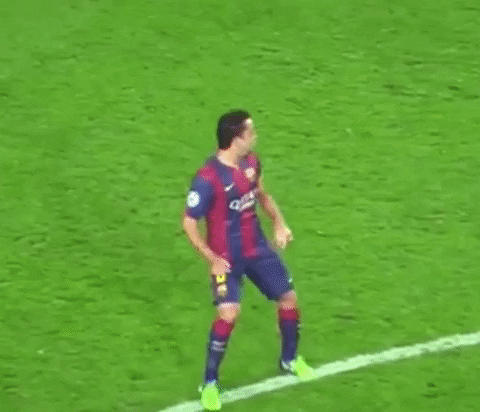Space, Space, Space: Leveraging Space In Hockey
What can soccer teach us about seeing and utilizing space
If you haven’t been thinking about hockey in terms of space control, I’m here to expand your understanding of the sport.
Hockey is an invasion sport
An invasion sport is a team game in which the purpose is to invade the opponent’s territory while scoring points; while also defending your own territory and keeping the opposing team's points to a minimum.
Research shows that strategies, tactics, and patterns of play transfer between invasion sports, like soccer and hockey.
Coach & Parent Note - Playing other invasion sports in the offseason can dramatically help a player better understand basic concepts of offensive and defensive play when they return to ice hockey.
Territory/Space
The key to any invasion sport is the battle for territory/space. This is one reason limiting freedom of movement is critical for driving positive results.
How players and teams utilize space is paramount. It’s no surprise that the best players are always thinking in terms of space/spaces. They ask themselves, in order:
Where is the space?
How can I use that space to my advantage?
These players are rarely caught fixating at the ball or puck, instead scanning for information, scanning for space.
Unlike the NFL and European soccer, hockey doesn’t have a ton of content diving into these topics. To take a deeper dive, let’s take a look at elite soccer players.
Lionel Messi
Leo Messi is truly the GOAT of the world’s most popular sport. He finally got the only missing piece in his trophy case by winning the 2022 World Cup with Argentina.
Unless you follow closely, you likely don’t realize that Messi barely touches the ball for the first five minutes of each match. So the question begs… What does Messi do during that time?
… He collects information
Messi will often literally walk and scan for the opening minutes of the game. It almost seems like he is letting the game pass right by him.
Some might even call him lazy… a few studies have looked at how much he runs during matches and found Messi often runs the least. Traditionally the more a player ran, the better their performance.
Messi’s genius bucks the trend. During one of those studies, Messi scored an absurd 54 goals in 52 games on his way to winning the golden boot for most goals.
“He (Messi) spends his match walking. He’s always analyzing the situation. When he receives the ball, he has a complete analysis of space and time in his head, He knows where every player is and boom.” - Pep Guardiola (Messi’s former manager at Barcelona)
Messi also has some other great wisdom that we’ll save for another day:
“I’m not used to doing tricks. And I don’t really like to do them. I prefer to do the rest of the things well.”
“I feel the moment from game to game. I feel the moment and play what feels right.”
Xavi Hernandez
As we learned from our scanning series, Xavi was the best all-time at scanning rates. When asked about it, he revealed a personal obsession:
“Think quickly, look for spaces. That’s what I do: look for spaces. All day. I’m always looking. All day, all day.”
“It's like an obsession. When I entered this room, I analyzed how the chairs, the tables were placed. I always want to sit where I can see the whole room. It's a reflex, I always do that.”
Dennis Bergkamp
Dennis Bergkamp was an artist of space from the Netherlands. He understood the game was about controlling space.
“I was always trying to think 2-3 seconds before. I was always thinking of spaces. Where is the space? How can I use that space to my advantage? That was always in my mind”
Seeing space as an opportunity full of possibilities.
“When I was younger, my coach said, ‘why do you always want to chip the goalkeeper?”’ I said, ‘most of the space is above the goalkeeper’.”
Improving Spatial Understanding
There isn’t much worse than a ‘practice player’. This player looks fantastic at practice but seems to inevitably struggle to translate that success into a game.
Practice players usually have great talent, but lack the timing and spacing required to implement the skills against an opponent. Here are a few areas to increase timing and spacing to avoid creating a practice player:
Effective players aren’t the ones that are necessarily the most technically skilled, but rather skillful at finding solutions. Being talented is not learning to repeat the solution. Being talented is learning to repeat the process of finding a solution. Eventually, players develop a sense and a feeling for what to do in games.
Viewing The Game of Hockey
If you want to develop an eye for space and what is likely to happen next in a hockey game … Take your eyes off the puck!
Think about space. What space is open? What space is being opened? What movement is needed to create space?
After all, it’s all about space.
Further Reading






